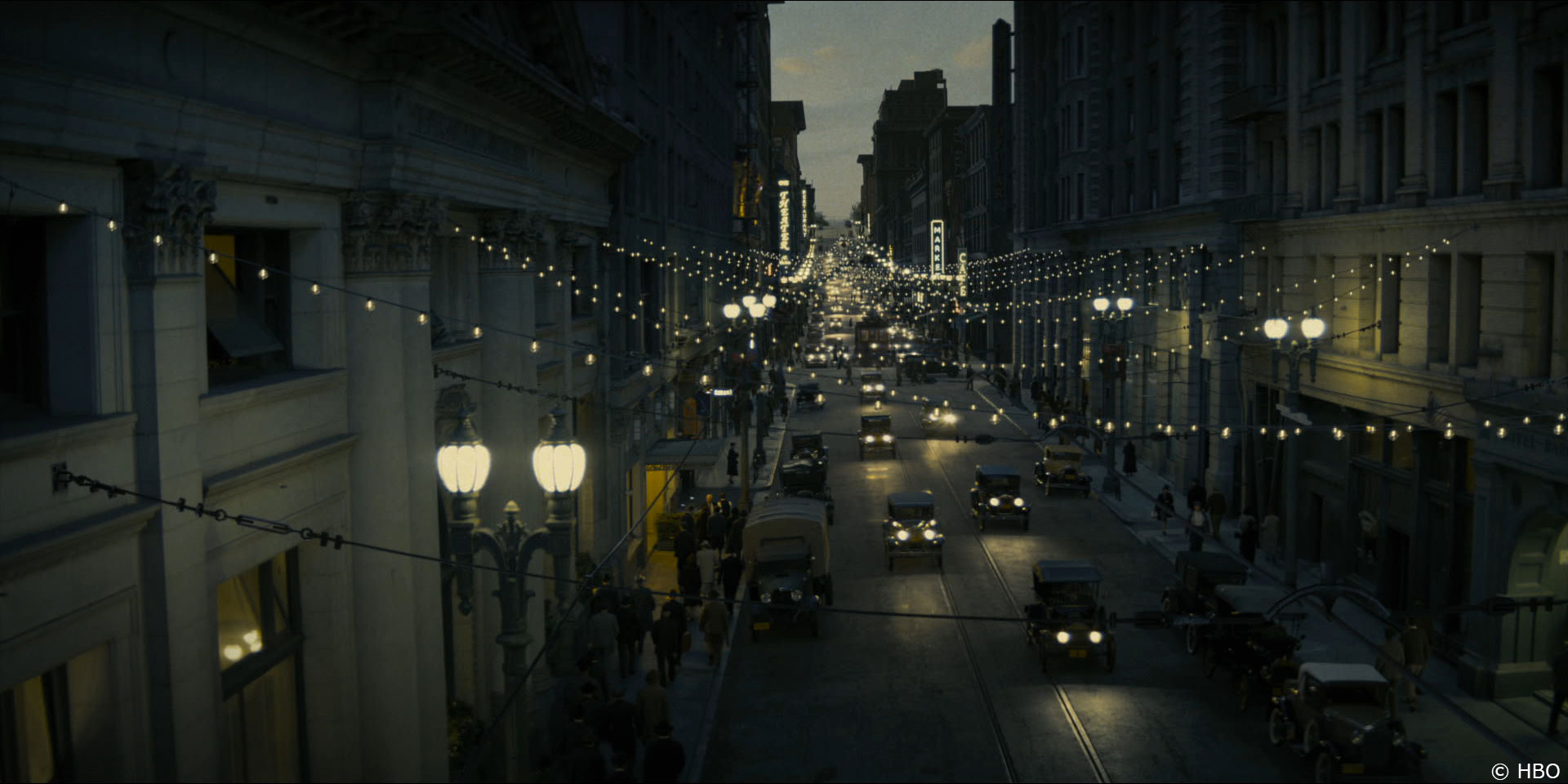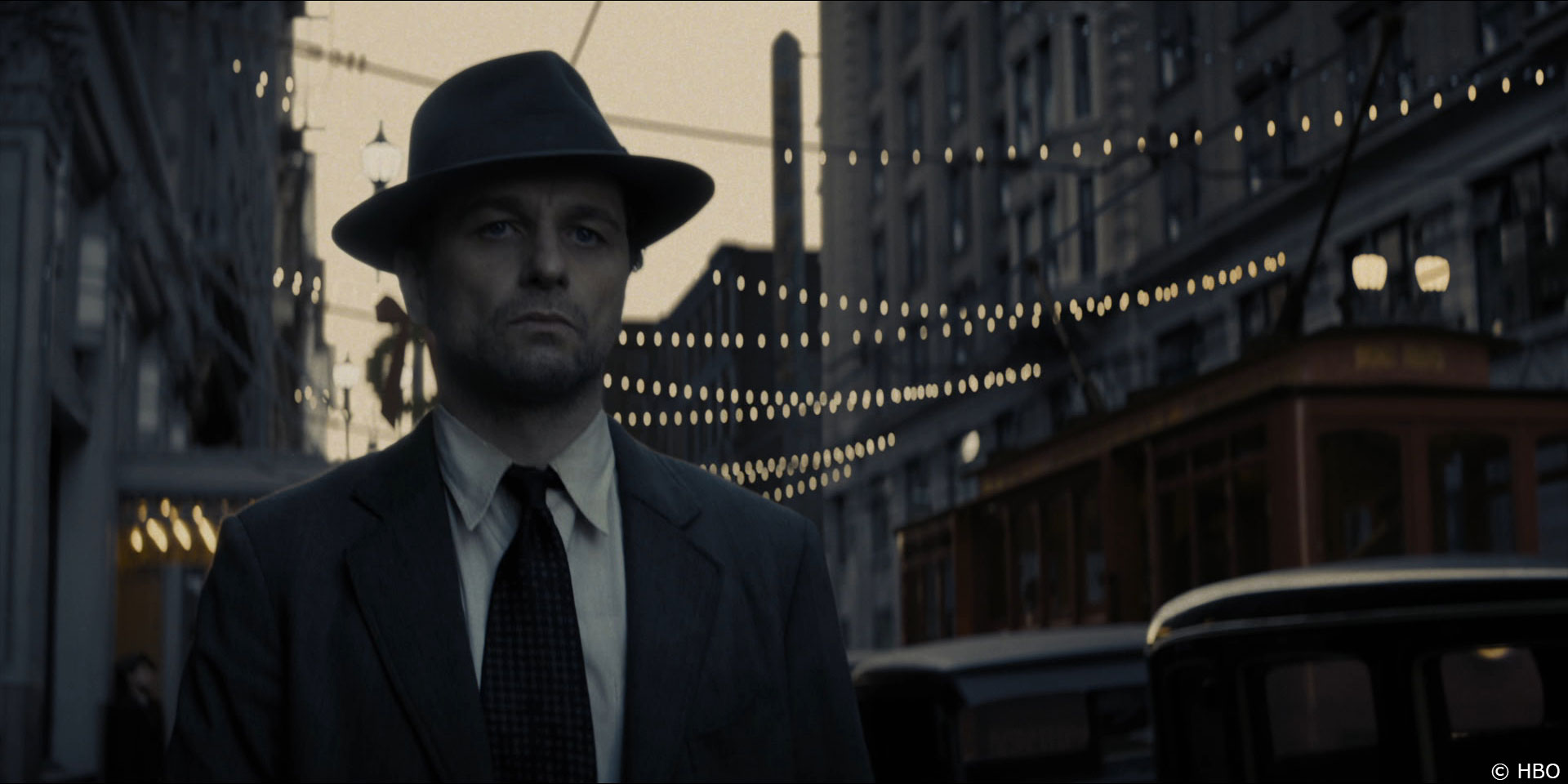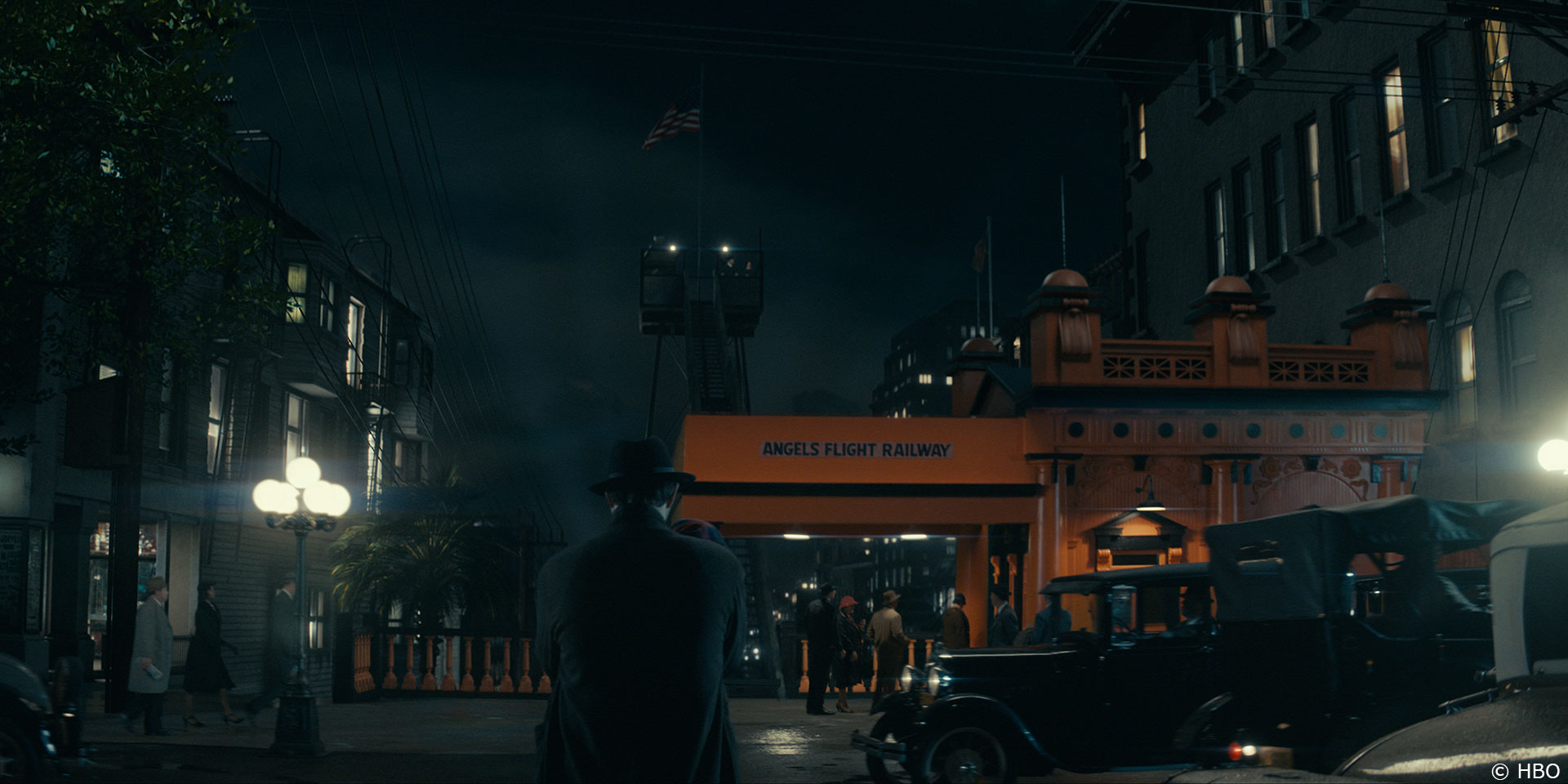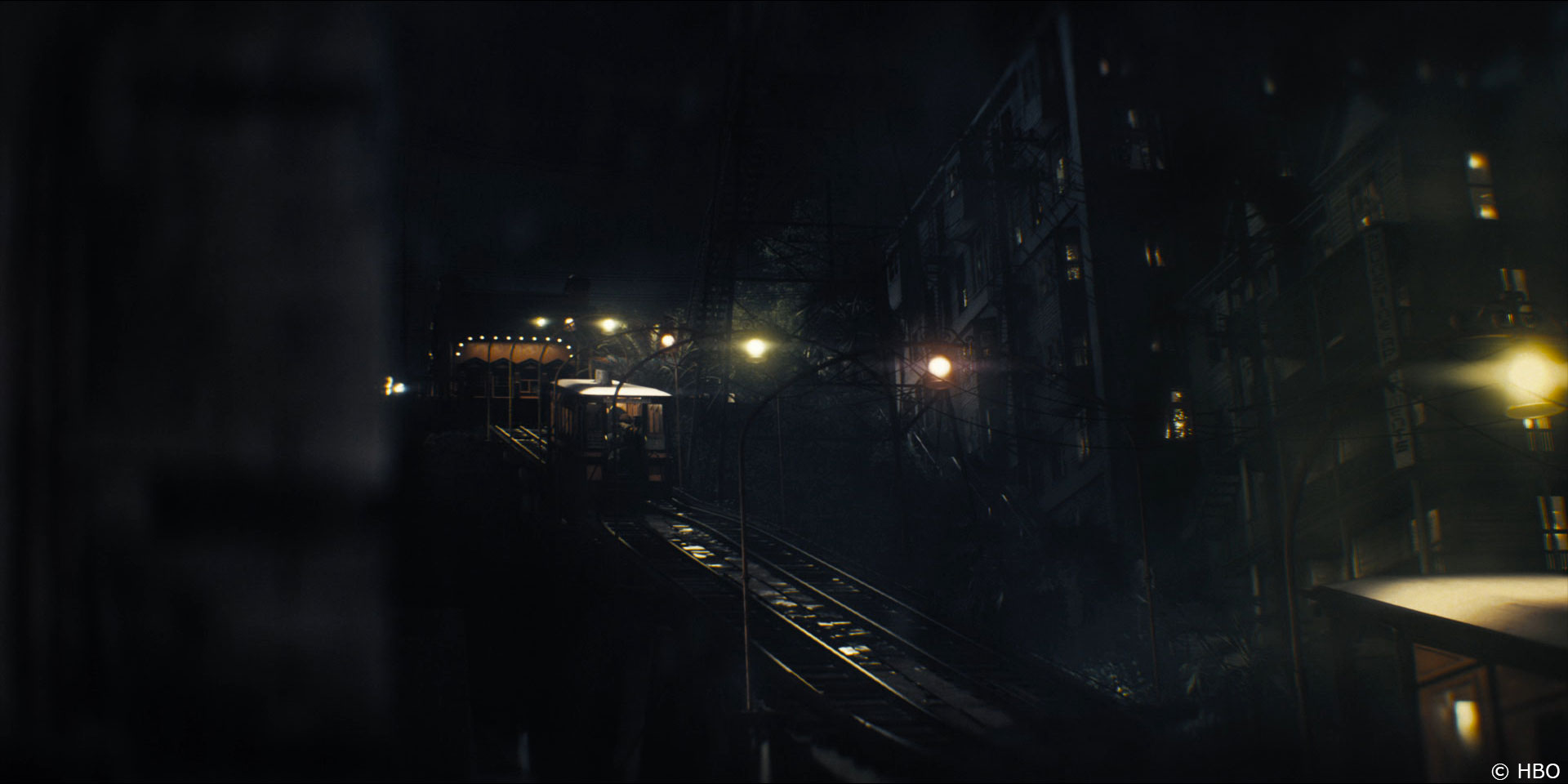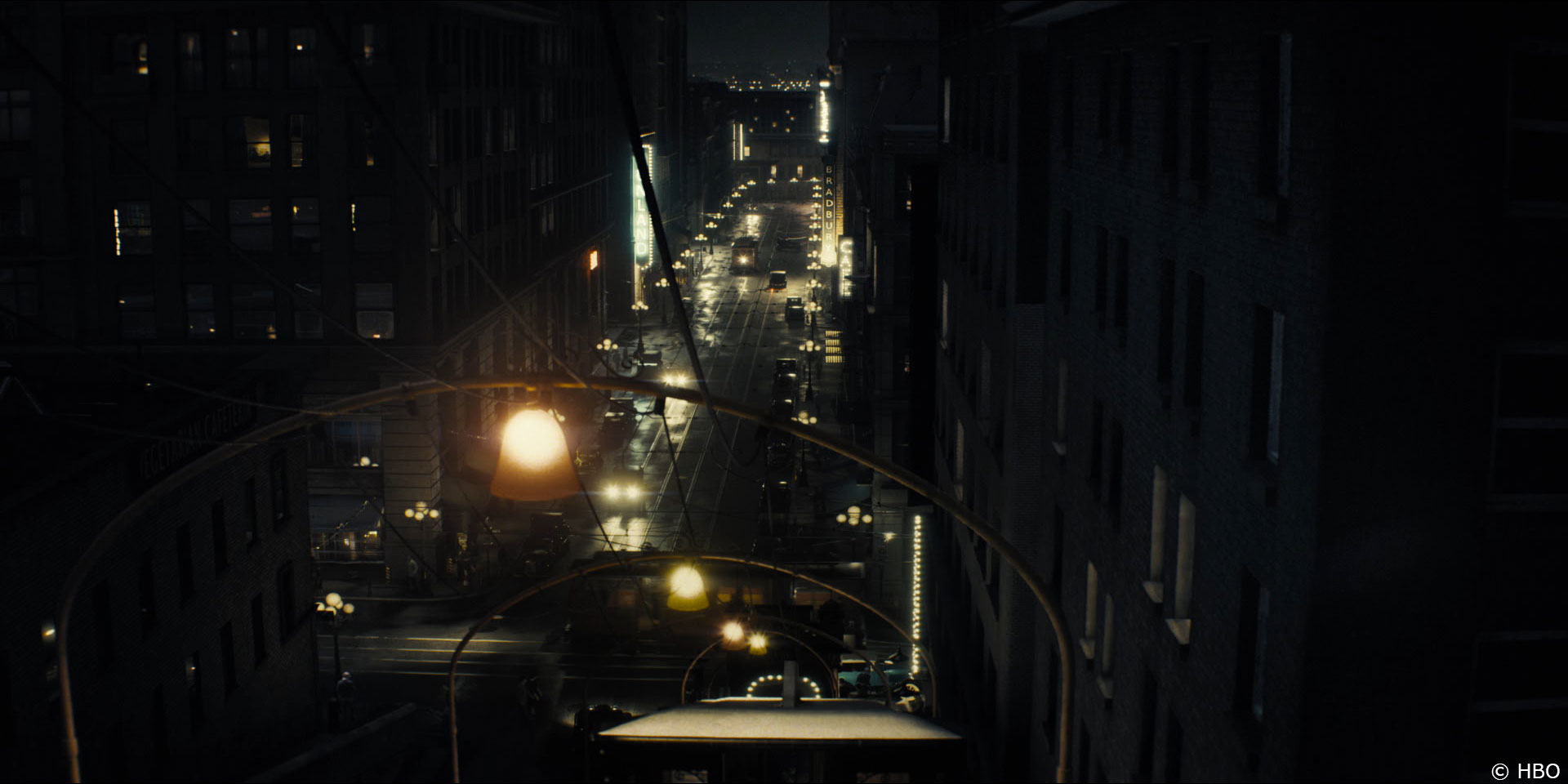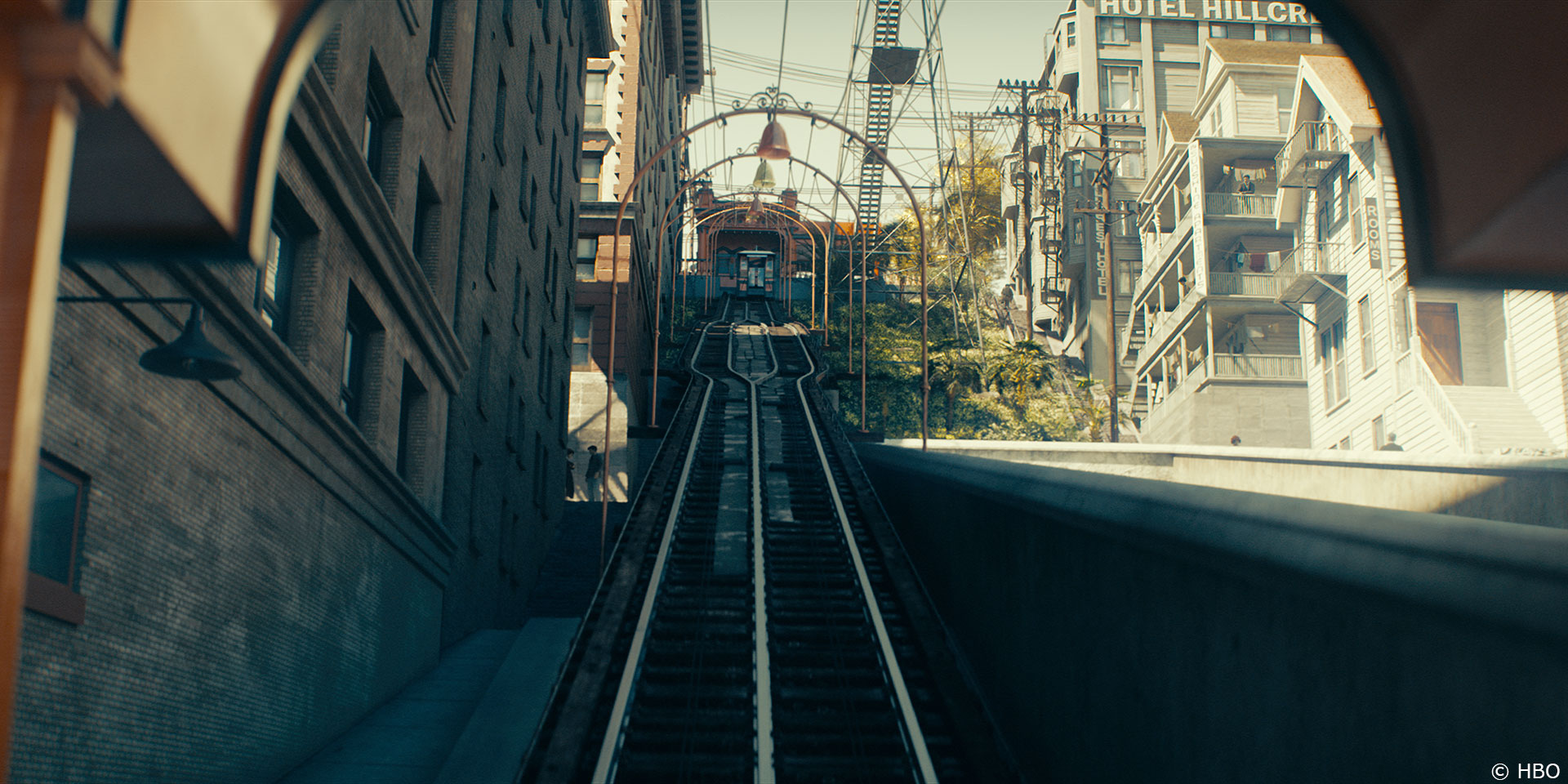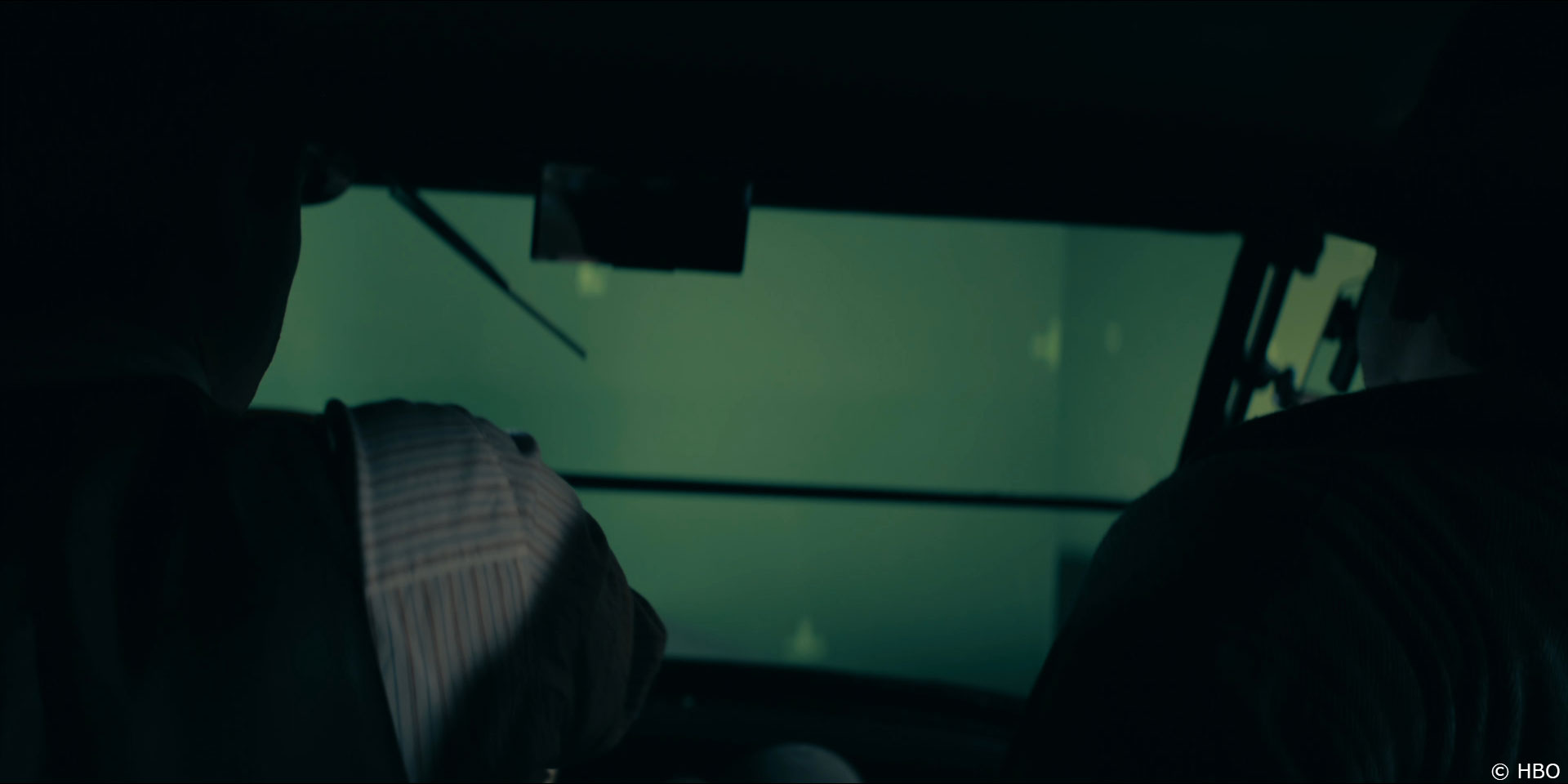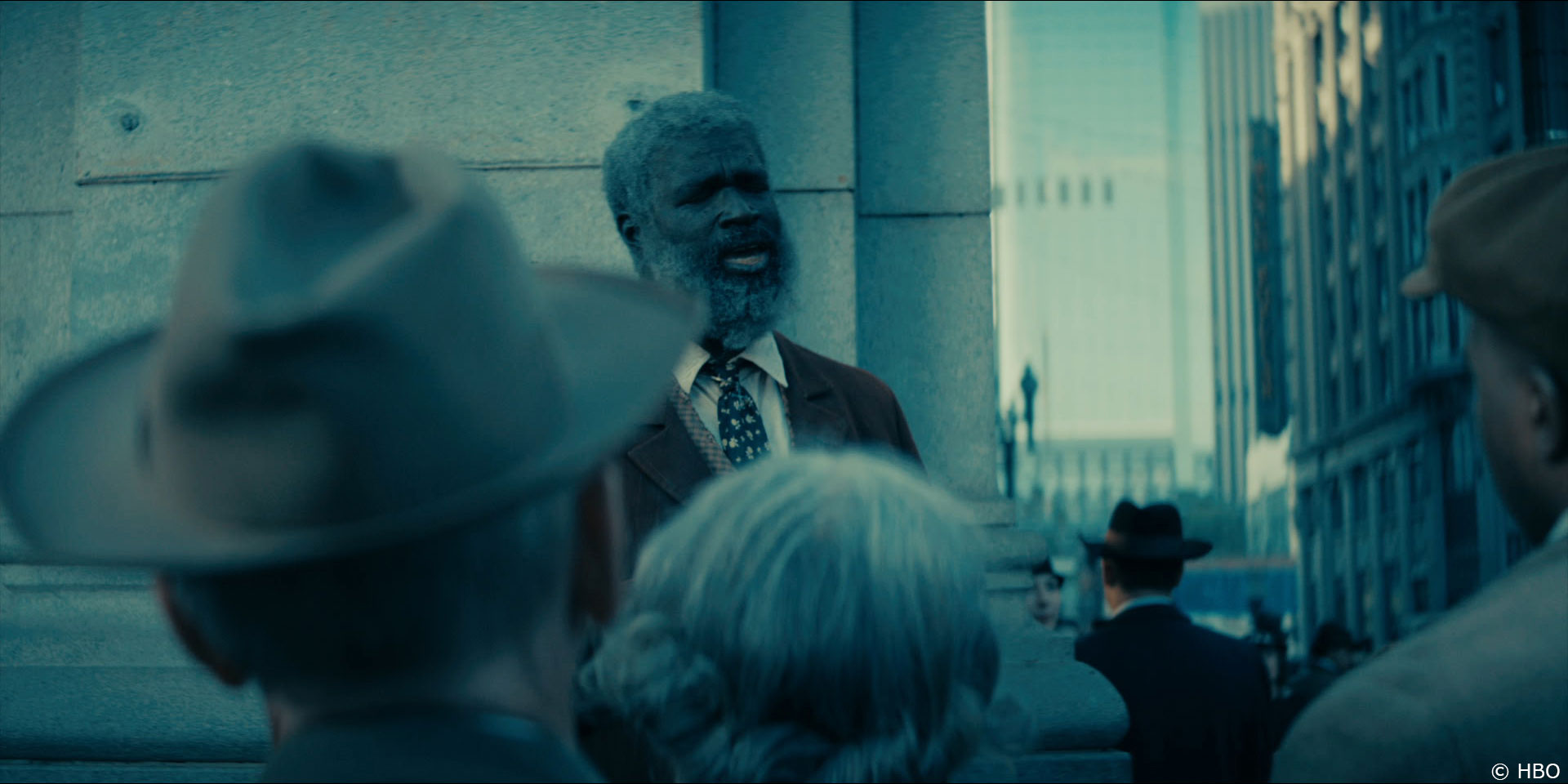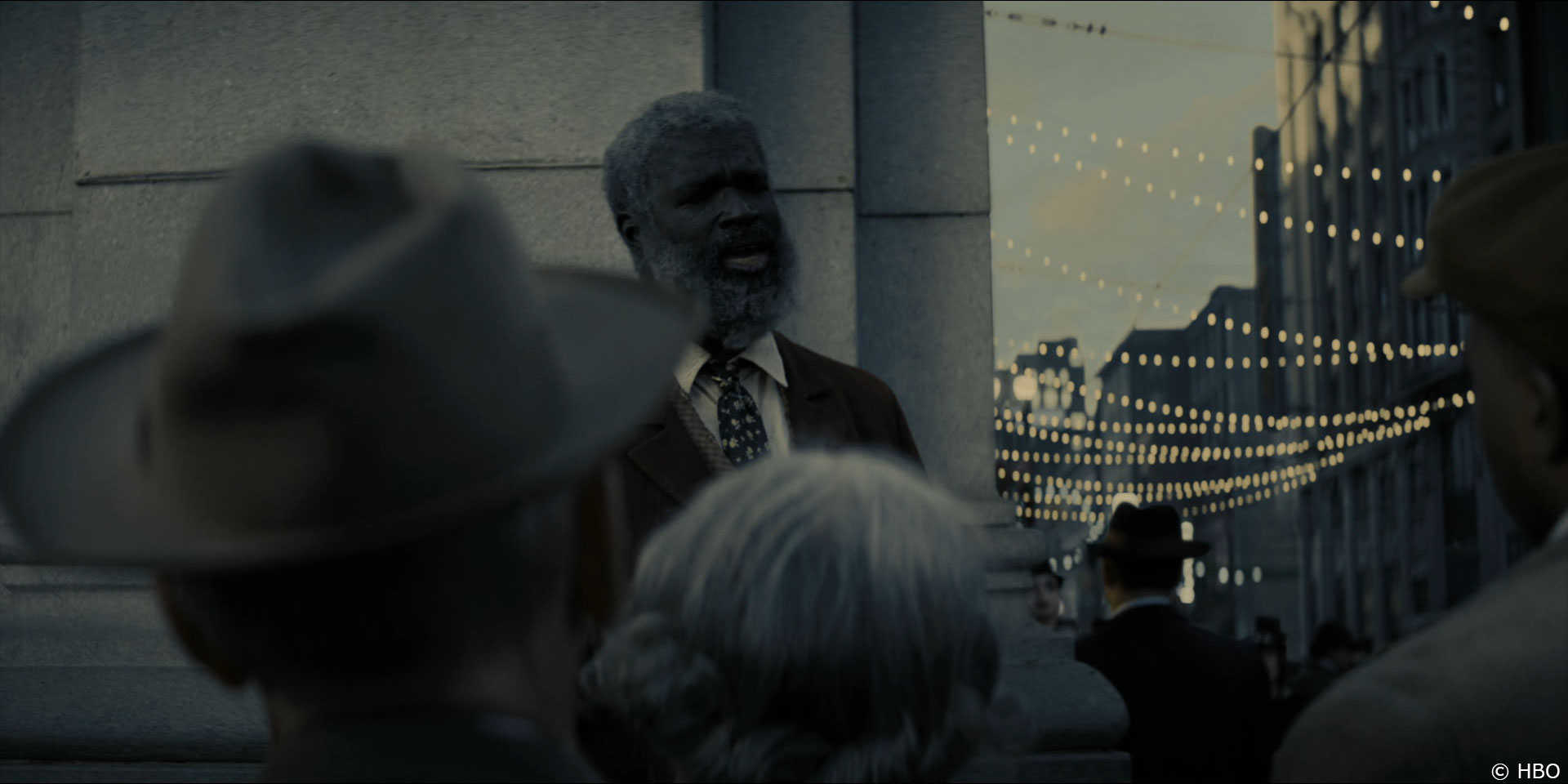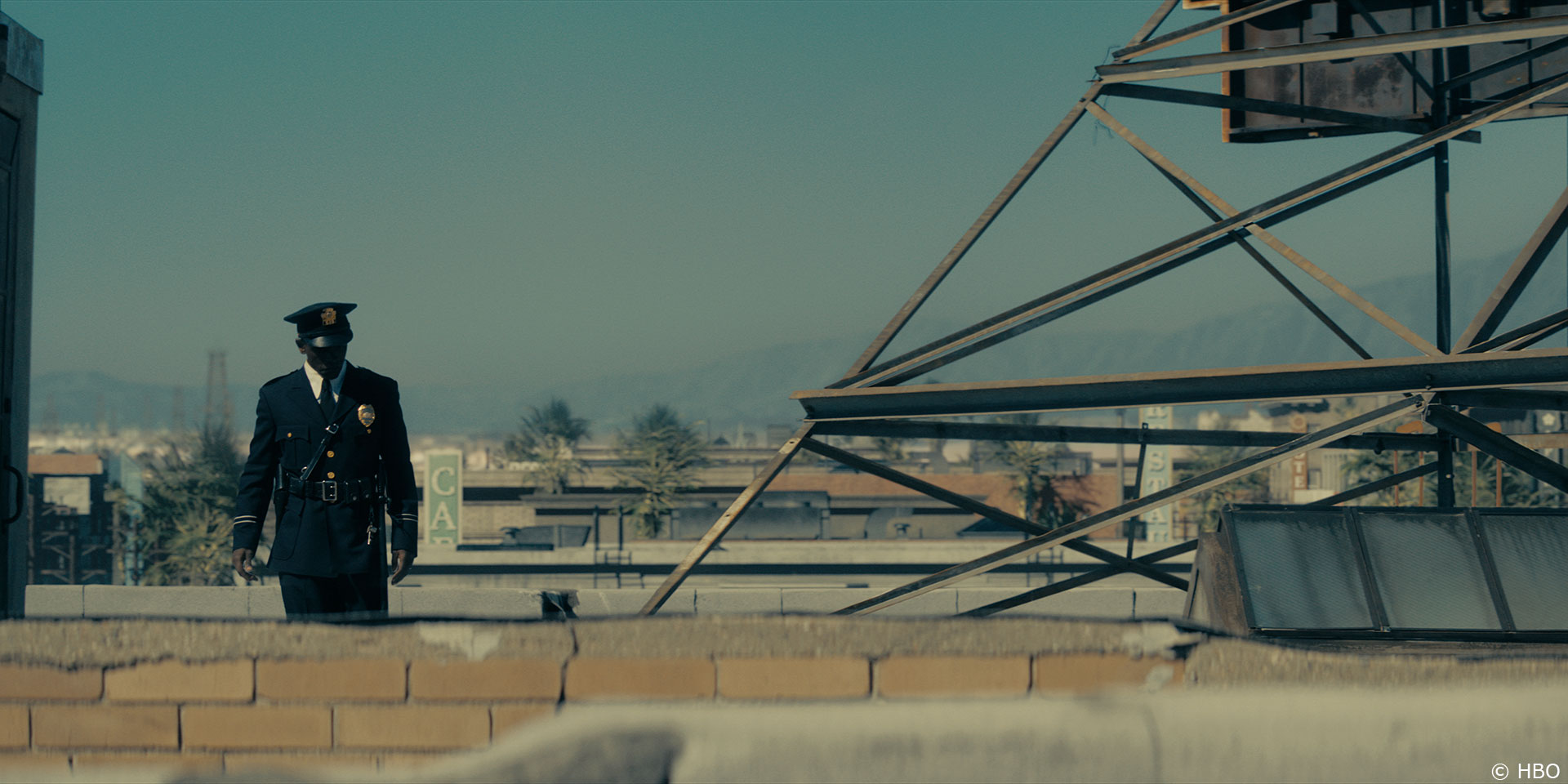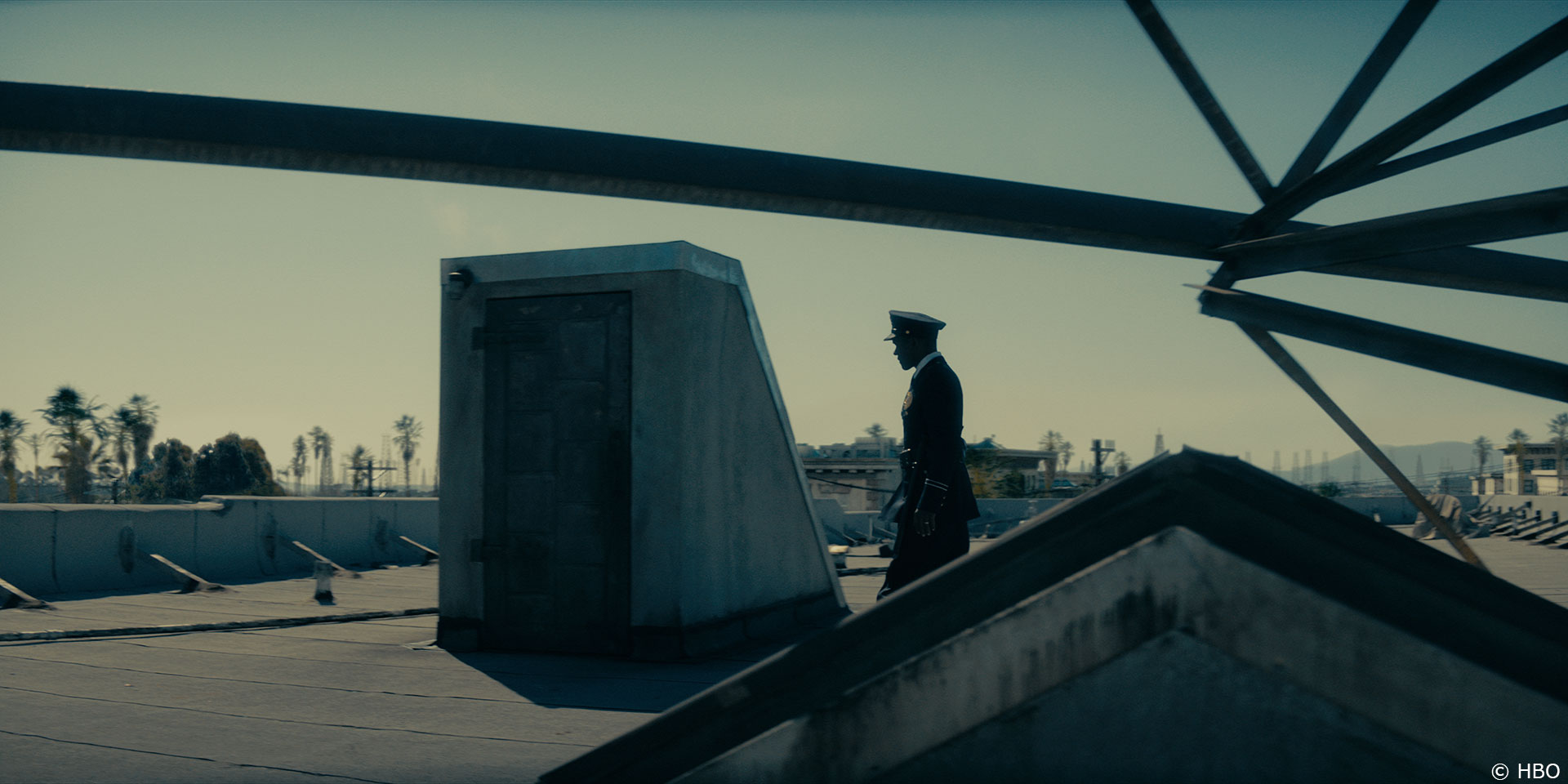In 2012, Mitchell Drain explained the work of Method Studios on THIS MEANS WAR. He then joined Shade VFX in 2015 and Digital Domain in 2018. He has worked on projects such as KONG: SKULL ISLAND, DOWNSIZING, WESTWORLD and THE TWILIGHT ZONE.
What is your background?
I have been involved in visual effects for over 30 years. I came to Los Angeles from Chicago with an Art degree and found myself at pioneering effects studio, Robert Abel and Associates. I learned all manner of optical effects techniques there. Ultimately, I ended up doing motion graphics and visual effects using the Quantel Paintbox, Harry and finally the Domino, Quantel’s 3k film compositing system. This led to more work as a Flame/Inferno artist, and finally to visual effects supervision.
How did you and Digital Domain get involved on this show?
Executive producer of episodics, Eric Robertson, had a history with Justin Ball, the client side visual effects supervisor. After the initial bidding process, we met and discussed the requirements of the show. I have a great interest in historic LA, and the idea of recreating the Angels Flight area of Bunker Hill, circa 1932, was a very exciting prospect.
How was the collaboration with the various directors and VFX Supervisor Justin Ball?
We worked primarily with Justin Ball. He has a great eye for detail and a complete grasp of what the Showrunner wanted for the visual effects. His understanding of the story arc and overall aesthetic of the show greatly informed every aspect of what we were creating.
What were their expectations and approach about the visual effects?
First priority was to be as accurate to the period and historical locations as possible. Once we had the historically correct models built, we focussed on serving the story. Sometimes this meant subtle variations in the composition and lighting to best serve the narrative.
How did you organize the work with your VFX Producer?
We were very fortunate to have Gayle Munro as our visual effects producer. She has a long history of managing large teams on big shows. Although “Perry Mason” had a more modest shot count, the complexity and detail of the work required the same attention as a show many times its size. We had two CG supervisors, Jonathan Green and Brian Creasy. Jon has an extensive background in digital environments and matte painting, and Brian has a wealth of knowledge as a CG Generalist. Eric M. Beaver was our compositing supervisor. Of course, there was quite a bit of overlap between disciplines, and the team worked together as one to deliver beautiful VFX work.
What are the sequences made by Digital Domain?
Digital Domain created the entire area of Angels Flight and the surrounding Bunker Hill environment seen in several episodes. It is a complex world that included period cars, digital extras in time appropriate clothing and a trolley system that ran through the city at that time. We also created a rooftop vista complete with period buildings, signs, oil derricks and period-correct fireworks. There are also various set extensions, plate enhancements and even a brutal knife attack that required a CG knife and requisite blood enhancement.
What was the biggest challenge in recreating the Los Angeles of the 1930s?
The biggest challenge was creating the level of detail necessary to sell the reality of these long lost locations. Angels Flight and the surrounding buildings are very iconic and recognizable. Attention had to be paid to every electrical cable, building material, period-specific levels of decay and even creating the proper growth and composition of foliage that existed at the time. Accuracy to time and place was a top priority.
Can you explain in detail about the creation of 1930 Los Angeles?
To accurately recreate the locations, it was necessary to reference archival photographs and vintage film clips. We were fortunate that production supplied us with LIDAR data of the filming locations. This coupled with photographs and measurements that we gathered, helped us to create models as accurately as possible. The team would compose these models and align them with the archival photos to adjust for any disparity in space or scale. Modelling was done in Maya, while Substance Painter was used for textures. DD has a vast library of buildings, props and human characters that were re-dressed for 1932 and used to fill out the environments. The renders were done in V-Ray and compositing was done in Nuke.
What was your main source for the references and inspirations?
Primarily archival photographs and vintage movie clips. Angels Flight was a popular location for shooting in its day, so we were able to use that as reference materials. We also drew inspiration from principal photography. The sets and lighting are authentic and true to the noir aesthetic. This gave us a great base from which to build our visual effects.
Where were the various parts of the show filmed?
The existing Angels Flight is in downtown Los Angeles at Pershing Square. Various downtown streets which still have some of the original architecture were also used. Any modern structures were digitally replaced with period buildings and props.
Can you tell us more about the creation of the Angels Flight environment?
Angels Flight was torn down in 1969 as part of an urban renewal project. The original location is unrecognizable today, nothing is left there. The iconic archway, funicular cars and tracks have been reassembled at Pershing Square, a few blocks from the original location at 3rd Street and Hill Street. As noted earlier, we had LIDAR scans of the existing location. We also took our own reference images that we used to create some models through photogrammetry. The environment is quite extensive. Details were included that were not seen in the final VFX shots, but were nevertheless necessary to create an overall accurate environment. The Clay street area is a good example of this. It runs through — halfway down the hill — next to what was known as the “McCoy” house. It was important to include that since any subtle changes, whether for story or composition, could reveal any unfinished or incomplete areas.
This environment is seen in various light conditions. How does that affect your work?
That is an excellent point and one that we were fully aware of at the outset. Ultimately, what that meant was that we would need to be sure the farthest corners of the environment needed to be fully realized since it would show in the daylight. Conversely, areas like whatever was going on inside the apartments, would need to be illuminated at night. Rooms were created for inside the structures, some relatively bland, some with Christmas trees and other props.
The streetlights in 1930 were different than today. Can you tell us more about the lighting work?
It is always good to start from reality. The production’s Art Department built out the immediate area where the actors were working. That gave us an excellent reference as to what our digital streetlights should do. There was a bit more creativity involved in lighting up areas where we had storefronts, cars, trolleys or Christmas lights to rationalize illumination, and for some sequences we had to match existing lighting exactly. Starting with HDRs, it was then up to the lighter to creatively interpret what was needed.
How did you populate the streets with people and cars?
Digital Domain has a vast library of car models from all eras. We created various paint schemes that would have been used in the time period, and they were animated in Maya as needed. The digital extras were also library elements from the DD vaults, and we have a library of motion capture walk cycles that were used for basic animation. Some custom animation was done for characters walking up stairs or interacting. For scenes that were sparsely populated, the characters were hand placed, while for more crowded scenes, Houdini was used to reference the animation and handled any problems with collision or interpenetration. The period clothing was created in Maya.
Did you use procedural tools for crowd and cars animation?
The cars were hand placed and animated. Larger crowds were populated using Houdini to reference animation cycles form our motion capture library.
Which sequence or shot was the most challenging?
It is hard to pick a favorite! There is a shot in the second episode that has a lingering technocrane move that is over a minute long. The shot begins at street level with a small crowd of people listening to a street preacher, then the camera slowly rises to look down the crowded street clear to the horizon. It would be difficult to overstate the complexity of this shot. The devil is in the details as they say, and there were so many seemingly small details to account for in this shot that it is hard to recount them all. To start, the camera track needed to be spot on as we were adding many elements to the existing location. The rotoscoping team had the Herculean task of isolating every character on the street and any element that would intersect with the VFX. All modern elements had to be removed and a trolley car, cables and tracks needed to be added, which meant that the entire street needed to be replaced digitally to accommodate the tracks and to remove modern traffic markings. Cars had to be placed onto the new street with all of the associated interactive lighting, the sidewalks were populated with digital extras that needed to be interspersed with the existing crowd and a matte painting was utilized to allow for distant period buildings and lights. Lastly, this was all seen as the camera rose through trolley car cables and digital Christmas lights. I’m sure I have forgotten something!
Is there something specific that gives you some really short nights?
Anyone who takes this career seriously is going to have some sleepless nights. Personally, I agonize over the creative decisions. Technical issues can be overcome. It is the creative call and the ripple effect that can be caused by an incorrect interpretation of a client request, or just a plain old wrong decision that keeps me up at night.
What is your favorite shot or sequence?
I am very proud of the Angels Flight work. It is both beautiful and historically correct. It serves the story narrative and allows for a compelling backdrop. It provides a small window into a time and place that no longer exists, that none of us will get to experience. That makes me happy.
What is your best memory on this show?
I would have to say the interaction with the team. The COVID-19 crisis broke just as we were gaining steam in shot production. The way that DD efficiently handled the transition to working from home was amazing, and the can-do attitude of the team was inspiring.
How long have you worked on this show?
This was a surprisingly quick turnaround. We first met with the VFX team in December of 2019, and delivered our final shots by the third week of June 2020.
What’s the VFX shots count?
The final VFX shot count for Digital Domain was 138 shots.
What was the size of your team?
We had an amazing team of 78 talented folks.
What is your next project?
I am presently prepping post VFX work on a feature film project that I am not at liberty to discuss.
What are the four movies that gave you the passion for cinema?
Awesome question! It is hard to narrow down. I am a great fan of classic movies, mostly horror films from the ‘30s, ‘40s and ‘50s. FRANKENSTEIN, THE WOLF MAN,– as long as it has a monster! AN AMERICAN WEREWOLF IN LONDON was a bit of an obsession for me when I first saw it. I wanted to be a monster maker. BLADE RUNNER made me want to create other worlds. Since I have an education in fine art, VFX seemed a natural progression.
A big thanks for your time.
PERRY MASON – VFX BREAKDOWN – DIGITAL DOMAIN
WANT TO KNOW MORE?
Digital Domain: Official website of Digital Domain.
© Vincent Frei – The Art of VFX – 2020

